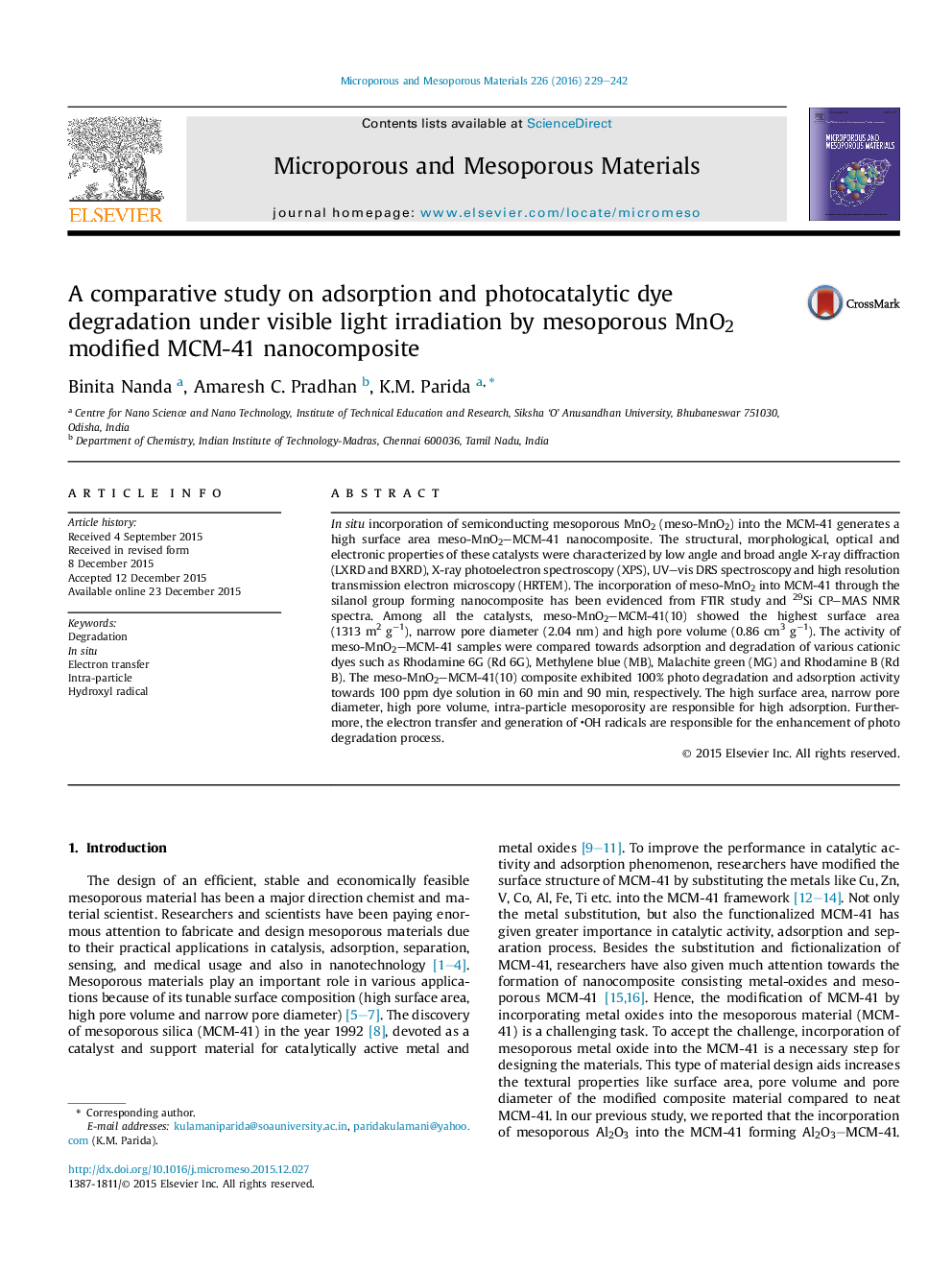| کد مقاله | کد نشریه | سال انتشار | مقاله انگلیسی | نسخه تمام متن |
|---|---|---|---|---|
| 72191 | 49013 | 2016 | 14 صفحه PDF | دانلود رایگان |

• In situ synthesis of meso-MnO2–MCM-41.
• The intra-particle mesoporosity, high textural properties have vital role for an efficient adsorption of dyes such as Rd 6G, MB, MG, Rd B.
• Electron transfer, generation of hydroxyl radical and suitable band gap are the key properties for high degradation of the dyes.
In situ incorporation of semiconducting mesoporous MnO2 (meso-MnO2) into the MCM-41 generates a high surface area meso-MnO2–MCM-41 nanocomposite. The structural, morphological, optical and electronic properties of these catalysts were characterized by low angle and broad angle X-ray diffraction (LXRD and BXRD), X-ray photoelectron spectroscopy (XPS), UV–vis DRS spectroscopy and high resolution transmission electron microscopy (HRTEM). The incorporation of meso-MnO2 into MCM-41 through the silanol group forming nanocomposite has been evidenced from FTIR study and 29Si CP–MAS NMR spectra. Among all the catalysts, meso-MnO2–MCM-41(10) showed the highest surface area (1313 m2 g−1), narrow pore diameter (2.04 nm) and high pore volume (0.86 cm3 g−1). The activity of meso-MnO2–MCM-41 samples were compared towards adsorption and degradation of various cationic dyes such as Rhodamine 6G (Rd 6G), Methylene blue (MB), Malachite green (MG) and Rhodamine B (Rd B). The meso-MnO2–MCM-41(10) composite exhibited 100% photo degradation and adsorption activity towards 100 ppm dye solution in 60 min and 90 min, respectively. The high surface area, narrow pore diameter, high pore volume, intra-particle mesoporosity are responsible for high adsorption. Furthermore, the electron transfer and generation of OH radicals are responsible for the enhancement of photo degradation process.
Figure optionsDownload as PowerPoint slide
Journal: Microporous and Mesoporous Materials - Volume 226, 15 May 2016, Pages 229–242